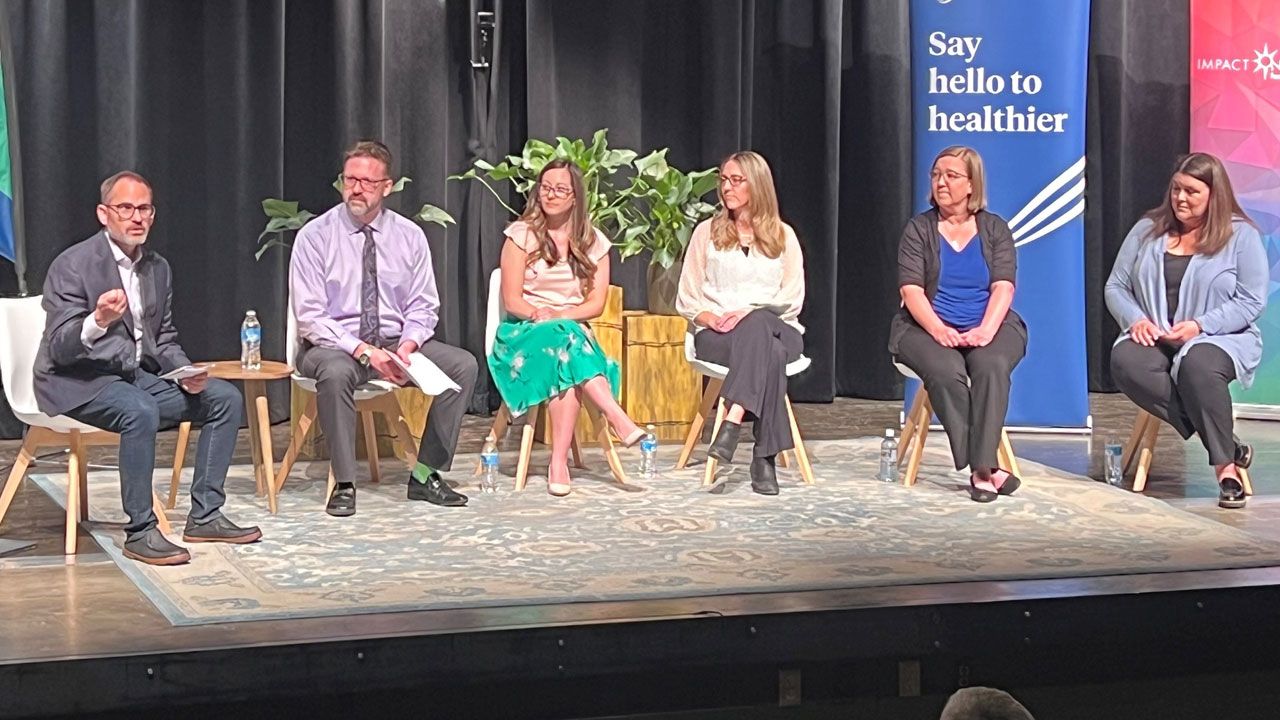Enterprise zones do more good than harm
COUNTERPOINT
Denver media have used the start of the current legislative session to feature several exposes on the problems associated with the state’s
enterprise-zone tax incentives.
SPONSORED CONTENT
Empowering communities
Rocky Mountain Health Plans (RMHP), part of the UnitedHealthcare family, has pledged its commitment to uplift these communities through substantial investments in organizations addressing the distinct needs of our communities.
These articles have consistently featured the negatives and have failed almost completely to mention the positives brought about by EZs. Perhaps
someone has a plan to influence legislation expected in the 1996 General Assembly.
Northern Colorado is now home to two enterprise zones. The Greeley/Weld County Enterprise Zone became active Dec. 21, 1987. The Larimer
County Enterprise Zone started June 25, 1993. Businesses located in the zones are entitled to Colorado income-tax credits which can be earned for a
variety reasons, such as investment in equipment, creation of jobs, and promotion of economic-development activities.
According to media reports, $27 million of tax credits were earned in 1994 for activities that took place the previous year. Because the Larimer County
zone began in mid-1993, only six months of its activity are included in the just-released state numbers. However, based upon the combined
population of Larimer and Weld counties, it is not unreasonable to conclude that at least $1 million of EZ credits were earned by Northern Colorado
businesses.
When these credits are analyzed, they show an estimated equipment investment of $11 million, the creation of 550 jobs, and the spending of nearly
$500,000 for economic development or child care in Larimer and Weld counties. In turn, the first-year property taxes collected on the new equipment
can be estimated at $275,000, and the Colorado individual income taxes paid from the new jobs created are estimated to exceed $250,000.
As the Legislature debates the concept of enterprise zones, more recognition should be given to the economic activity that they promote. The tax
revenues listed above continue to be paid year-in and year-out. Further, the Legislature should recognize that these credits are earned not just by large
corporations (as the media seem to dwell upon), but also by numerous small businesses.
During the current legislative session, the real attention should be focused on making the EZ tax incentives more targeted. Two possible areas of
refinement come quickly to the fore.
1. Creation of base (manufacturing) jobs should continue to have an incentive. Perhaps the credits for creation of base jobs should be more generously
rewarded.
2. At present, contributions for economic development or child care are given tax benefits that can add up to at least 83 percent of the actual
contribution. This occurs because these contributions also generate a “charitable contribution” deduction, with a usually high marginal tax reward.
With an additional 50 percent tax credit, this tax incentive is considered by many to be overly generous – even excessive.
Rather than berating EZs, we should continue to emphasize their economic benefits. Northern Colorado, with its two zones in Weld and Larimer
counties, has leveled the playing field with the rest of Colorado. We need these tax incentives to be competitive in the global marketplace, and to bring
new and expanded businesses to our communities.
The Fourth Congressional Race
With Wayne Allard (R-Loveland) announcing his intention to run for the 1996 Senate nomination, the fourth congressional race is becoming more
heated. The April 2 caucus date is fast approaching.
Guy Kelley of Fort Collins has announced his intention to seek the Democratic Party nomination. Kelley currently represents the fourth congressional
district on the CU Board of Regents. The name of Tom Redder, the 1992 Democratic nominee, continues to be circulated as another possible
nominee.
Iliff’s state senator, Don Ament, was the first Republican to declare his intention to seek the congressional position. Greeley’s state representative, Pat
Sullivan, has also declared for the job. Fort Collins’ state senator Bob Schaffer reportedly has been raising campaign funds; but has been strangely
silent about making a formal declaration for the job.
Both Ament and Schaffer have expressed interest in pursuing the caucus route in gaining their nominations. Sullivan has not ruled out a possible
petition campaign to gain his slot in the August Republican primary.
Larimer and Weld counties are the most populous counties in the congressional district, so any candidate who can dominate one or both counties has
the inside track to the nomination. Ament has picked Fern Wolaver of Loveland to be his campaign manager. Sullivan has named State Rep. Bill Jerke
of La Salle as his campaign manager. Obviously, the consolidation strategies for winning Larimer and Weld counties are fast developing. Some are
beginning to wonder whether Schaffer will be able to find an equally prominent anchor for his effort.
John Knezovich is a certified public accountant in Fort Collins.
COUNTERPOINT
Denver media have used the start of the current legislative session to feature several exposes on the problems associated with the state’s
enterprise-zone tax incentives.
These articles have consistently featured the negatives and have failed almost completely to mention the positives brought about by EZs. Perhaps
someone has a plan to influence legislation expected in the 1996 General Assembly.
Northern Colorado is now home to two enterprise zones. The Greeley/Weld County Enterprise Zone became active Dec. 21, 1987. The Larimer
County Enterprise Zone started June 25, 1993. Businesses located in the zones are entitled to Colorado income-tax credits which can be earned for…
THIS ARTICLE IS FOR SUBSCRIBERS ONLY
Continue reading for less than $3 per week!
Get a month of award-winning local business news, trends and insights
Access award-winning content today!


